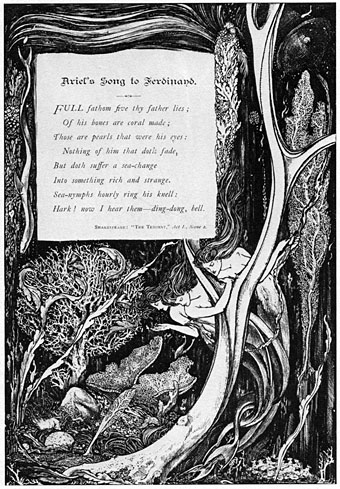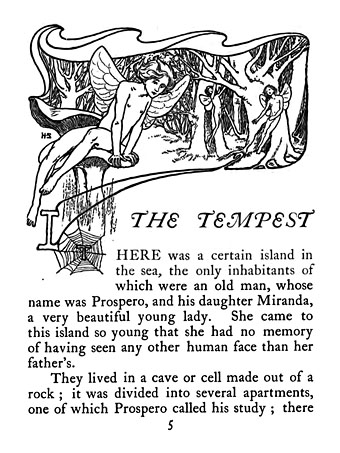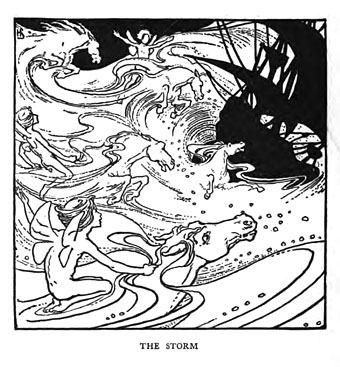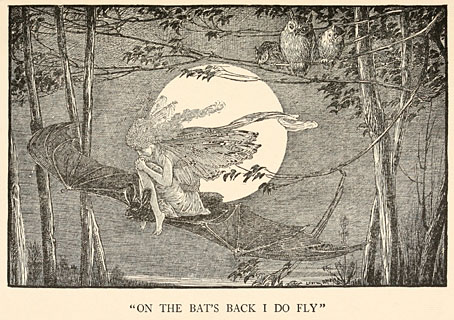
“Such stuff as dreams are made on”: Heathcote Williams and Toyah Willcox.
DVD viewing earlier this week was Derek Jarman’s wonderful adaptation of The Tempest which he directed in 1979. This is my favourite of Jarman’s films, partly because the play is my favourite Shakespeare (along with its polar opposite, Macbeth) and also because it’s a film infused with an occult sensibility which comes directly from the director’s own interests, rather than being the usual film or theatre conventions of what magic entails. An example of this is the grimoire which Prospero (Heathcote Williams) is seen leafing through which Jarman reveals in his autobiography, Dancing Ledge, to be his own 17th-century edition of Cornelius Agrippa’s Occult Philosophy. In his account of the filming he also describes his conception of Prospero as being based on Dr John Dee, the Elizabethan occultist who Shakespeare would certainly have known of, and may even have met since the pair both had business with Elizabeth I’s court. The most explicit reference to Dee comes in the shape of Prospero’s magical glass (above), based on Dee’s Monas Hieroglyphica, and a prop I’d dearly love to own. Dee was also a character in Jarman’s Jubilee (1978), and his Angelic Conversations gave a title to Jarman’s later filming of Shakespeare’s sonnets.
Seeing Jarman’s adaptation again had me thinking about the various representations of the characters. Ariel is generally depicted as a fairy type although he’s a lot more powerful than the fairies in A Midsummer Night’s Dream. As for Caliban, like Grendel in Beowulf, he’s an all-purpose monster whose predominant attributes seem to be whatever Ariel isn’t: ugly, earthbound, stupid, treacherous, and so on. I’d be tempted to propose the island’s quartet as representing the four elements—Prospero: water; Miranda: fire; Caliban: earth; Ariel: air—but I’m sure that’s not an original idea given the amount of academic trawling through the Bard’s corpus. Rather than dig for symbolism, what follows is a few pictures found during another trawl of my own through the Internet Archive, where the books aren’t drowned but patiently await their rediscovery.
Artist unknown (1882).
Ariel is one of my favourite characters so I tend to pick out his pictures but even so this was still the best plate in the book. From The Young Folks’ Shakespeare Series by Laura Valentine, a short adaptation of the story into verse.
Walter Crane (1894).
From Eight Illustrations to Shakespeare’s Tempest, a typically Pre-Raphaelite rendering by Walter Crane.
Charles Ricketts (1895).
Not from Archive.org but I had to include this, one of several Shakespeare illustrations that Ricketts produced for The Magazine of Art. It’s a shame Ricketts didn’t produce a book edition of his own, he was ideally suited to the material.
Robert Anning Bell (1901).
Robert Anning Bell’s version was the subject of a post earlier this year and it’s still the best I’ve seen, copiously illustrated throughout with many full-page drawings and vignettes on nearly every page.
Helen Stratton (1907).
Another adaptation of the story for children and with some distinctly childish drawings—Caliban here becomes almost cuddly—but there’s a nice Art Nouveau influence in some of Helen Stratton’s linework.
Helen Stratton (1907).
Louis Rhead (1918).
I’m generally not too keen on Louis Rhead’s illustrations but this picture of Ariel riding a bat makes a nice piece to finish with, one of several drawings for the play from Charles & Mary Lamb’s Tales from Shakespeare.
There are many, many more illustrated editions, of course, these only touch the surface. And there’s another film version due this December with Helen Mirren playing a female Prospero. I’ve no problem with revisionist interpretations—Jarman’s film is revisionist to a degree—but from the trailer this new adaptation looks like the usual Hollywood fare. And Russell Brand is in it… All the CGI in the world won’t summon a fraction of the magic that’s in Derek Jarman’s finale when Elisabeth Welch sings Stormy Weather.
Elsewhere on { feuilleton }
• The illustrators archive
Previously on { feuilleton }
• Robert Anning Bell’s Tempest
• In the Shadow of the Sun by Derek Jarman
• Derek Jarman at the Serpentine
• The Angelic Conversation
• The life and work of Derek Jarman








I’ve actually just started reading Norrie Epstein’s The Friendly Shakespeare for the first time.
“There are thirty operatic versions of The Tempest alone”. and Paul Mazursky did a film version in 1982.
Also don’t fogert the ending of Gaiman’s Sandman
The Tempest” is a companion piece to “A Midsummer Night’s Dream”, from the third collection, Dream Country. “The Tempest” is more reflective than “A Midsummer Night’s Dream”, and features less of the original play, though it echoes it cleverly in several ways and sequences. It is principally about Gaiman’s Morpheus and his issues with himself and his place in things. Here we see in detail the Morpheus only briefly fleshed in former issues – the vulnerable, emotional, confused Dream King. Gaiman uses “The Tempest”, a play fundamentally about change, endings, and new beginnings, to finish the series.
from Wikipedia
Yes, I think I’ve seen the Mazursky film although I don’t remember much about it. And I know Neil likes the play a great deal. That Midsummer Night’s Dream episode of Sandman is superb, one of my favourite comics. I also quite like Prospero’s Books even though it mangles all sense and coherence from the play.
I remember the Mazursky film because I had a big cursh on Molly Ringwald at the time and it was her first film. I saw it on Video a few years after it came out.
According to Wikipedia:
“the film critic for The New York Times, was harsh in his review. He praised Paul Mazursky for some of his earlier works but Canby did not like this film, and wrote, “Tempest is an overblown, fancified freak of a film. Experiencing it is like watching a 10-ton canary as it attempts to become airborne. It lumbers up and down the runway tirelessly, but never once succeeds in getting both feet off the ground at the same time. The spectacle is amusing in isolated moments but, finally, exhausting”
Aussie Musician/Actress Deborah Conway is in Prospero’s Books.
See her album cover
http://en.wikipedia.org/wiki/File:Bitch_Epic_albumcover.jpg
PS
I should have mentioned that
In 1991, Conway played Juno in Peter Greenaway’s Prospero’s Books, singing a setting of William Shakespeare’s masque from The Tempest to music by Michael Nyman.
Dear God, Taymor’s ‘Tempest’ looks a disappointment! Had she wanted to shake things up with an actress playing the role she should have telephoned Judy Dench, who’s more than equipped with the skills for the challenge. Mirren has a thin voice and a sulky face… always has… and it shows even in this abysmal trailer. And sad too that Taymor, whose roots after all were in physical puppetry, should have so merrily abandoned what she did best to embrace the CGI that renders every damned film the same. This looks no better than the execrable recent re-make of ‘Clash of Titans’. (And no, I don’t really know why I watched THAT!)
I’m aghast! Give an otherwise interesting director a Hollywood budget and watch the talent crumble. They get fat and lazy at the too-amply-laden table, and too puffed up on their own importance. Sad, sad, sad. Long live Jarman’s ‘Tempest’. With a budget of tuppence and more creative imagination in his little finger than Taymor can summon out of her entire shabby box of CGI-tricks-with-a-sell-by-date, Jarman conjured a masterpiece.
Come to think of it… and speaking of Jarman… I should imagine that even as I sit here, his muse and trusty carrier of his flame, Tilda Swinton, who would herself make a damned fine Prospero (though she’d probably favour playing Ariel or Caliban) will be watching that trailer and snorting in disbelief!
One of my three favourite films of all time; Jarman’s version will never be bettered in my opinion. Not just because of Heathcote Williams’ Prospero and a truly outstanding Ariel from Ian Charleson, but for the best Caliban ever by Jack ‘Orlando’ Birkett. Hard to believe that he was to all intents and purposes blind when he played that role. Incredible. Toyah Willcox gives us an exceptional Miranda, too. Apart from a rather nondescript Ferdinand, the film just drips with magic.
As for the forthcoming version, I wonder if it looks so dire because of the way the trailer is edited? I’m quite happy with the cast – anything with Helen Mirren, Alan Cumming and Alfred Molina in it is bound to be at least interesting, and I don’t have a problem with Russell Brand as Trinculo either. My main reservation is, of course, the CGI. Even Peter Greenaway’s version managed to to conjure a genuinely fabulous island without recourse to any but the most primitive digital effects. Truly, imagination will always trump the illusions born of a large budget.
Clive: Jarman says in his book that his film cost £150,000. I wonder what the budget was for the new version? Jarman’s budget might cover some of the catering. Tilda would be a fantastic Ariel but she also has a witchiness about her (hence that Narnia film which I haven’t seen) that would suit a female magus. Julie Taymor no doubt has good intentions, trying to import Shakespeare into contemporary Hollywood, but they won’t allow that these days without it being larded in special effects.
Dave: Ariel was Karl Johnson, you’re probably thinking of Ian Charleson from Jubilee (where the pair look very similar). Jarman’s Tempest has a perfect companion film in Sally Potter’s Orlando; both are queer in different ways, both feature splendid performances from Heathcote Williams, they both have their Elizabethan qualities; and Tilda, of course, was Derek’s muse in later years. She also made a great homage to him a few years ago with Isaac Julien.
Remember Prospero,s books by Greenaway ?
Hi Leo. Yes, I mentioned that in one of my comments above. I like it for the most part–the score is great–but it makes a nonsense of the story. Jarman at one point had plans for a stage version in London’s Roundhouse; he says he spoke to John Gielgud about it so he might have had him as Prospero before Greenaway if everything had worked out.
Some years ago I heard recording of Ian Charleson singing Ariel’s songs from an RSC production of The Tempest. The music was by Guy Woolfenden. Charleson’s voice was ravishing. I wish I could find a copy of that recording.
John: Damn! I’m always getting those two mixed up!
Clive: that recording used to be available on a CD called ‘The Songs of Ariel’ by Ian Charleson with the Royal Shakespeare Theatre Wind Ensemble. It was published by Gamut publications on the Ariel label. Rec No: DLC 6791 Good luck with tracking it down.
Many thanks for that information Dave. I’m onto it, though I think this is going to be a tough search even with the internet to help.
The only thing I remember about the Jarmon Tempest film is the fantastice version (to my ears then) of Stormy Weather, and how appropriate it was to the film
Re: Ian Charleson singing Ariel’s Songs: It has finally been released on CD, and is available at arielmusic.co.uk. The CD is titled “The Songs of Ariel”.
A sample is on YouTube, I believe.